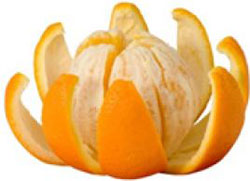Back to School Lunches…Tasty, Easy, Fun, & Healthy
By: Sheila Gains, Family & Consumer Science Extension Agent, Arapahoe County

Keep in mind that the end goal of a well packed school lunch is a healthy, well performing child. You don’t want the food to end up in the trash. So, lunches must first taste good, and be easy to eat.
School Lunches Should Taste Good:
- Taste is a personal thing, so involve your children in selecting foods to have on hand. Packing nutritious foods is great, but it needs to be eaten if it is to benefit your child.
School Lunches Should be Easy:
- Easy enough that you or your child can make it and pack it within about 10 minutes.
- Packed in a bag and containers that are easy to carry to school and back home again, if not disposable.

- Easy to open. Hot foods in a thermos container can create a vacuum as the food cools. This might make it impossible for a child and difficult for an adult to open. The wrapping on prepackaged foods can also be a problem for young children to open. Consider cutting a slit before sending these items to school. Even natures packing such as a banana or orange peel can benefit from a little head start. Cut a small nick in the peel of a banana, just below the stem. Try scoring the peel of an orange, or removing it altogether before packing.
- Easy and quick to eat. Many children only get 20 minutes to get their lunch box, walk to the cafeteria, find a place to set and eat their lunch. A whole apple while tasty, easy to pack & healthy, can take a small child or a teen with braces the entire 20 minutes to eat. In this case, apple slices, apple sauce or dried apple chips, might be a better choice. Some children are allowed to use a school microwave to reheat foods, but find out what the policy is at your school. A long line to use the microwave will cut into your child’s eating time.
School Lunches Can be Fun:
- Fun might be over rated as criteria for a packed lunch. However, it could include a special napkin, note from home, riddle of the day or an occasional special treat.
- Depending on your child’s age they might enjoy sandwiches or other foods cut into interesting shapes (cookie cutters can help with this).
- Ask your children what they consider fun yet healthy foods, and then you decide when to pack them as a surprise.
School Lunches Should be Healthy:
- Healthy means the foods provide nutrients like, protein, vitamin C, vitamin A, iron, calcium and fiber, and not too much added fat, sugar or salt. Examples of healthy foods include: String cheese, low-fat yogurt, baked chicken nuggets, hardboiled egg, whole grain bread, and an endless variety of fruits and vegetables.
- Healthy also means the food will not make children sick. Food safety considerations include keeping cold foods cold and hot food hot until they are eaten.

- Frozen gel packs can help keep cold food cold. Gel packs need to be cleaned and refrozen each day.
- Some foods can be frozen and packed to keep other foods cold and then eaten partially frozen.
- Examples include grapes (cut in half first to avoid choking hazard), banana or pineapple chunks, fruit yogurt and 100% juice boxes. This eliminates the need to carry frozen gel packs back and forth to school. Some sandwiches such as meat, peanut butter and jelly, or cheese can be sent to school frozen. Be sure to send any lettuce, tomato and mayo on the side to be added later as they do not freeze well.
- Hot foods can be packed in a preheated thermos. To preheat a thermos fill it with very hot water and let it sit 2-3 minutes. Then pour out the hot water and fill with hot food. Thermoses also need to be brought home each day to be washed before refilled.
Let’s Talk
Before school starts, have a conversation with children about getting the cupboard and refrigerator ready for packing healthy school lunches. Help them come up with a list of foods to eat in each of the following food categories: fruits, vegetables, protein, dairy, and whole grains. Help them think outside the box. For example, the old standard of carrot or celery sticks as a vegetable pick might be expanded to include, cherry tomatoes, pea pods, vegetable juice or kale chips. Whole grain sandwich bread is just one whole grain option. Also consider others such as popcorn, graham crackers, a whole wheat bagel, or quinoa salad.
Recipe for Health:
Kale Chips

Ingredients:
- Non -stick vegetable spray
- 1 bunch kale, washed in cool water and patted dry
- 1 teaspoon vegetable oil
- Salt and pepper to taste
Directions:
- Preheat oven to 350 degrees F.
- Lightly coat cookie sheet with non-stick spray.
- Tear kale leaves from the tough center stem. Tear leaves into 2-3 inch pieces.
- In a large bowl pour vegetable oil over kale and message oil into kale until it evenly coats the front and back of all pieces.
- Lightly season kale with salt and pepper or a favorite salt free seasoning. Because the kale shrinks a lot during the baking/drying process, a little seasoning goes a long way. You can always add more seasoning later.
- Place kale on a large cookie sheet in a single layer. Depending on the size of the bunch of kale this might require cooking it on two cookie sheets or in two batches.
- Cook for 20 minutes or until dry and crispy.
- When cool store in an airtight container.





